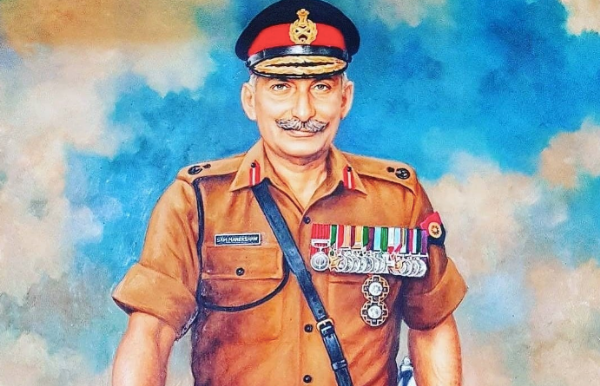When Field Marshal Sam Manekshaw was shot nine times in Burma yet miraculously survived!
A Japanese soldier emptied nine bullets into Sam Mankeshaw’s belly and lungs. It was impossible for anybody to survive in that condition. No one thought he would survive.
Total Views |
It was in 1942 when the battle for Sittang Bridge took place against the Japanese in Burma The British Army went to war against Burma during that period. Sam Hormusji Framji Jamshedji Manekshaw was said to have been shot nine times. This took place when Captain Sam Manekshaw and his troops defended the bridge over the Sittaung river with great valour.

A Japanese soldier emptied nine bullets into Sam’s belly and lungs. It was impossible for anybody to survive in that condition. No one thought he would survive. Semi-conscious, he was taken to a hospital thirty-six hours after he was wounded. Sam would have died had not his faithful Sikh orderly, Sepoy Sher Singh, carried him in his arms and, collaring a doctor, forced him to attend to his wounds. The doctor had said he will not waste his time on Sam.
However, Sher Singh insisted and took the doctor to see the now-conscious Sam. "What happened to you, young chap?" the doctor asked. Given his witty behaviour, Sam said, "A bloody mule kicked me." The doctor laughed. "I see you have a sense of humour. You might be worth saving!" he said. He removed much of Sam’s intestines and stitched him up. This was one of many such incidents that spoke of his grit and determination.
There are many saviours of the Indian Armed Forces but no military general in Independent India’s history has ever captured the nation’s veneration as Field Marshal Sam Manekshaw did. ‘Sam Bahadur’ (Sam the Brave) — as he would be known after 1942, spent a glorious military career spanned over 5 decades & participated in five different wars. Born on April 3, 1914, to Parsi parents, Hormusji Manekshaw and Heerabai, Sam Hormusji Framji Jamshedji Manekshaw grew up in Punjab.
A good student, he wanted to go to London to pursue medicine like his gynecologist father. But Hormusji refused, saying that Sam was too young to stay abroad on his own. In an act of rebellion, an angry Sam appeared for the Indian Military Academy (IMA) entrance examination. He got through, and on October 1, 1932, became a part of the first batch of 40 cadets to be selected for the Indian Military Academy, Dehradun. After being commissioned, Sam was attached to the 2 Royal Scots. Since his name was a mouthful for most of the officers of the Scottish Regiment, they abridged to “Mr. Mackintosh”.
Post Independence, India witnessed multiple wars, but the only one which was conclusive was the 1971 war against Pakistan, one which resulted in a decisive victory for the country and resulted in the creation of the nation of Bangladesh. Manekshaw guided us to victory in a mere 13 days, making it one of the shortest wars in history.
As a military leader, Sam was able to demand courage from his soldiers because his own was never in doubt. Such was the respect Sam commanded in the military world that when he visited Nepal after liberating Bangladesh, King Mahendra conferred on him the title and sword of Honorary General of the Royal Nepal Army.
This was the beginning of a tradition whereby chiefs of the two neighboring countries are made generals in each others’ armies. One of the most celebrated generals of the Indian Army, In 1972, Sam Bahadur was awarded India's second-highest civilian honor, Padma Vibhushan, and became 1st IA officer to be promoted to the rank of Field Marshal in Jan 1973.
Similarly, there are several golden feathers attached to his well-decorated hat.


